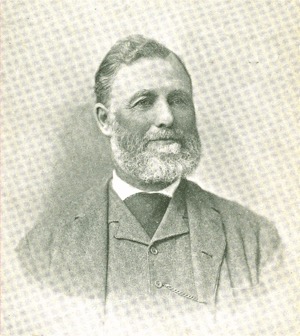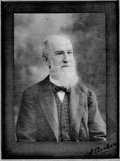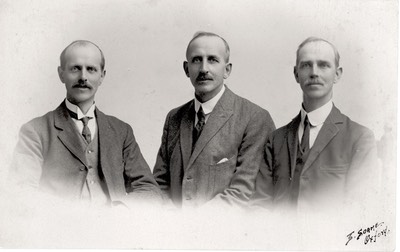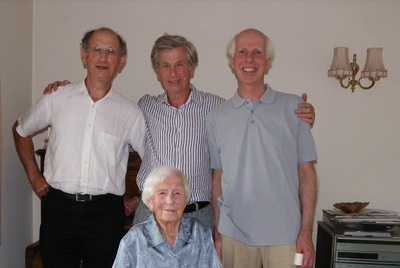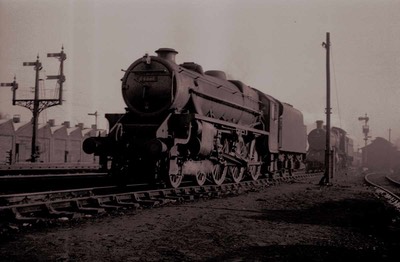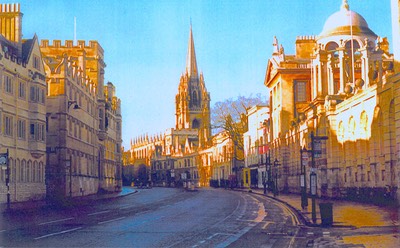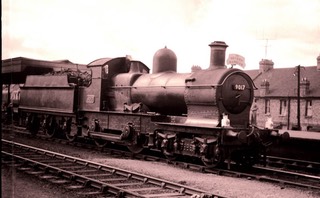"IF YOU WANT TO KNOW WHO WE ARE”:
Click here for a page about the people covered by this website.
ABOUT THIS FAMILY HISTORY WEBSITE:
STOP PRESS:
There has been a gap of several years in amending or doing anything to this website due to health and technical factors. Todays date is Thursday 19th June 2025. Its a big day in my life! The plan is to add-to and tidy up this website in due course, with thanks to my friend Riley and all his help on this project.
-------------------------------------------------------------------
Launched: Thursday 10th April 2014. Latest amendment: 02.04.2018. Software: Sandvox (site) and Pixelmator (graphics) done on a Macbook and using Reunion for the family trees. My sincere thanks to my good friend Willow Songsmith (musician and polymath) for his extensive advice and assistance on all aspects of the site, including (especially) choice of software and hardware.
Totally non-commercial. Not even primarily factual. Maybe characteristically idiosyncratic, with elements of a scrapbook and/or a family history ‘box’ (like “Annie’s box” in Charles Darwin’s family, which served as a place to keep family history memorabilia). Certainly not just listing names and places and dates and occupations and so on. (Added 23.2.15): Trying to record some of ‘life’s journey’ of a few of my forebears, as a record worth sharing on a ‘private study’ basis.
It will of course have its fair share of the usual ancestor data, but…….
A primary intention is NOT to supply all (or even, necessarily, most of) the information which is available from the public records on ‘character X’ from the family, together with the chapter and verse details. This history does provide some (of course) of that stuff from the archives.
But this history seeks also, to the limited extent permitted by one lifetime and life’s practicalities, here and there to fill-in round the edges of those facts with additional data by way of graphics and relationships within the family. And sometimes (and importantly) this history fills-in by way of information about businesses and firms which contributed to the prosperity of some of our cast of characters.
Another way in which this history seeks to ‘fill-in round the edges’ of the facts available from the public and other records is by way of a narrative offering an interpretation of the bare facts, where appropriate. The narrative is usually mine. Frequently the narrative appears below graphics, by way of commentary on the image. This aspect of the website is, to me, an intensely interesting aspect of the entire process. An opportunity to add significantly to what would otherwise be a limited-view. Of course, it goes without saying, that some of the commentary is unsubstantiatable. But many-a-time it is based on my own knowledge gained by personal experience. This is the stuff that dies at the end of individual lives, when unrecorded. Sometimes the commentary is by third parties, such as my mother, Gwen Penfold.Archer’s reminiscences about various aspects of her life, and corresponding accounts by other family members, likewise. The narrative aspect of the website was crystallised by seeing “The Glass Menagerie” (Tennessee Williams) at Nottingham Playhouse on 19.3.16 in which Tom Wingfield (the writer son in the story) adds so much meaning to the play by providing a clarity of view that would have been so lacking to me otherwise.
In these ways, a picture emerges, I trust, of ‘who’ some at least of our family members were. Visible upstanding figures in the landscape of time. Each one a person, a forebear. Genetically-linked. A living and breathing being with all the frailties that life implies. Quite an objective for a mere website of course, and perhaps impossible to achieve. But a goal nevertheless. And infinitely meaningful for me. And it is never feasible really to know a person. But some attempt is needed, partly because such a compilation seems not to have been attempted before, at least not for our family. And partly, the attempt is needed to forestall what lies behind Cicero’s stark observation that people without history are like children who know neither where they are going nor whence they came. And in this limited way, I seek to use this knowledge to grapple, while I still have time, with life’s eternal conundrum, that elusive quicksilver of ‘meaning’ and ‘identity’ (or ‘What makes us unique?’), before rightly being consigned to the inevitable recycling process. And that ‘meaning’ may well be seen best from the perspective of life as a journey to be looked-back on. (Added 20.10.15): Link to further thoughts on this prompted by today’s Guardian: click here.
And one more thing to say about objectives. Yes, I’m filling in round the edges of the usual factual archive data where I can. And in addition I’m saying that likewise, I celebrate of course the ‘good bits’ in the lives of my predecessors just as all family historians do. But as to the ‘less-good bits’, in my take on these, I will try to be ‘neutral’. In other words, I will try not to deny these things, not even to hide by not mentioning them, except when specifically asked to do so. No, I see uncovered records of frailties and all those things which we were taught in our youth ‘to acknowledge and bewail’ as having been ‘most grievously committed by thought word and deed’ against etc etc, I see them as undeniable parts of the historical record. Without them its meaning is significantly distorted. They are simply the darker colours of the tapestry of life, as essential as its moments of joy, for an adult view of humanity's complexity. And so they are not excluded. (Added 9.3.16) Equally, however, it is extremely difficult to include some of this ‘darker’ material before a signifcant time has passed. Sheer sensitivity to people’s feelings makes it painful until…well, until those involved have moved on in some way. And what sort of things do I mean? Divisions broadly. Differences. Disputes. Disciplining (whether public or otherwise), and so on.Thus there is some need for a time ‘gap’, at least in relation to events of this century, and some decades before. (added 6.5.17): But Gray’s elegy, in the very last verse (of the epitaph) contains a persuasive injunction against ‘seeking his merits or frailties to disclose’ because they repose with himself the bosom of his father and his God - a strong case for discretion on this point. (Added 25.7.17): Further thought, and experience, leads me to add this, on the same point. (click here to go so separate page on the subject of ‘unwrittne family history’).
Yes, yes. So much puff about intentions! When are we going to get on to something interesting? Something factual. Something actually about the family? Very soon. But I need to say these things before that stage begins, because this site, this record, this history will start from very small beginnings. And I have no idea at this very early stage whether these intentions can actually be realised.
PS: The author’s interests will probably intrude extensively and idiosyncratically. Especially in the graphics. Railway photos from Phil’s 1950s hobby, and his and Ruth’s much-loved rescued (2003) Bedlington terrier Fred, inter-alia. Doubtless these say something in themselves.
And here is a quote from Lytton Strachey's 'Eminent Victorians'. which suggests an approach to presentation of history which seems to me today (20.3.2019) eminently useful for me:
The history of the Victorian Age will never be written: we know too much about it. For ignorance is the first requisite of the historian—ignorance, which simplifies and clarifies, which selects and omits, with a placid perfection unattainable by the highest art. Concerning the Age which has just passed, our fathers and our grandfathers have poured forth and accumulated so vast a quantity of information that the industry of a Ranke would be submerged by it, and the perspicacity of a Gibbon would quail before it. It is not by the direct method of a scrupulous narration that the explorer of the past can hope to depict that singular epoch. If he is wise, he will adopt a subtler strategy. He will attack his subject in unexpected places; he will fall upon the flank, or the rear; he will shoot a sudden, revealing searchlight into obscure recesses, hither-to undivined. He will row out over that great ocean of material, and lower down into it, here and there, a little bucket, which will bring up to the light of day some characteristic specimen, from those far depths, to be examined with a careful curiosity. Guided by these considerations, I have written the ensuing studies. I have attempted, through the medium of biography, to present some Victorian visions to the modern eye. They are, in one sense, haphazard visions—that is to say, my choice of subjects has been determined by no desire to construct a system or to prove a theory, but by simple motives of convenience and of art. It has been my purpose to illustrate rather than to explain. It would have been futile to hope to tell even a précis of the truth about the Victorian age, for the shortest précis must fill innumerable volumes. But, in the lives of an ecclesiastic, an educational authority, a woman of action, and a man of adventure, I have sought to examine and elucidate certain fragments of the truth which took my fancy and lay to my hand. Lytton Strachey (1880–1932). Eminent Victorians. 1918
